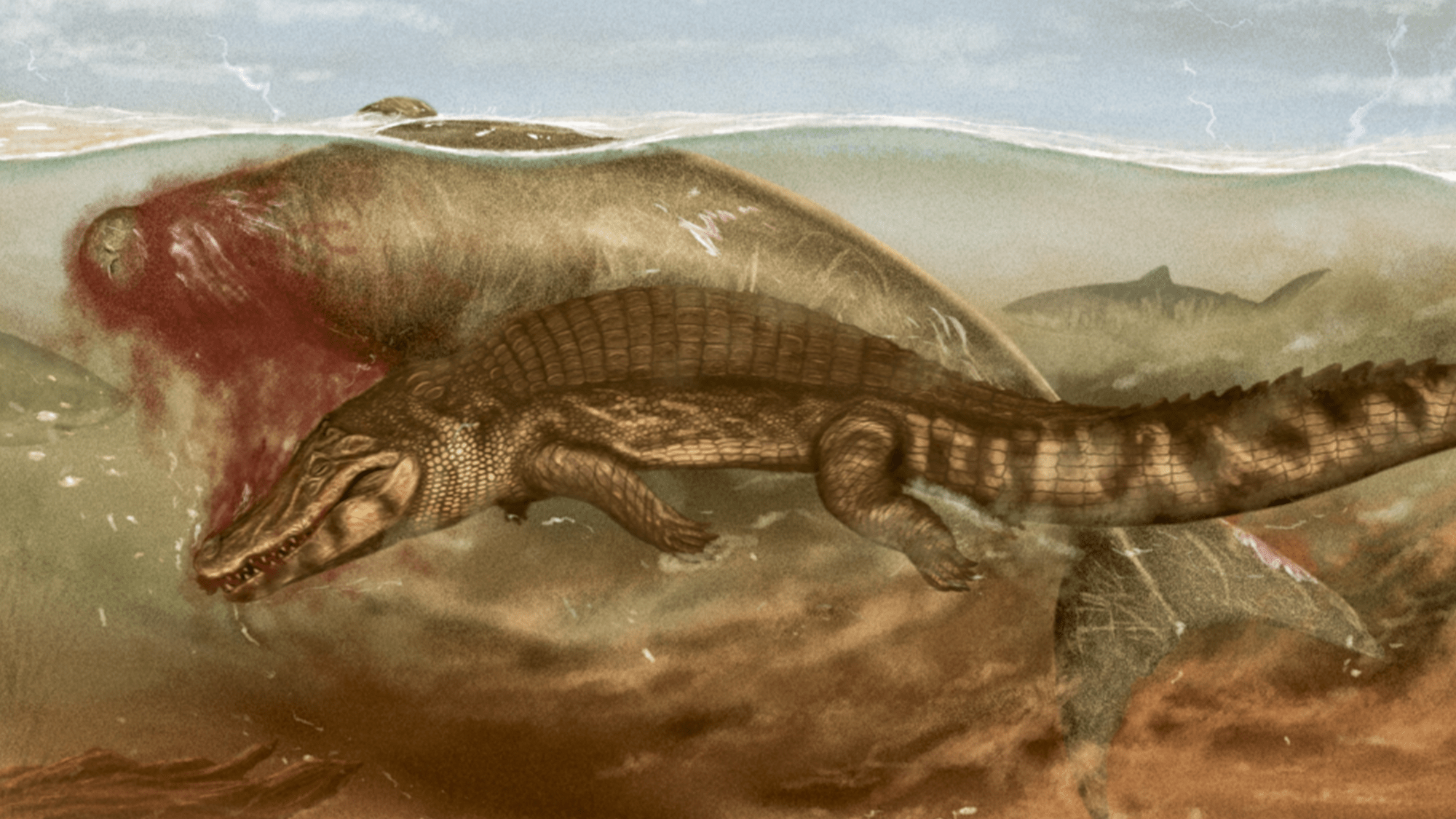One unknown day millions of years ago, a prehistoric manatee relative was attacked by a hungry crocodile. After it was killed by the crocodile, the seacow’s remains were scavenged by a tiger shark. This prehistoric food chain anecdote is based on new fossil evidence detailed in a study published August 29 in the Journal of Vertebrate Paleontology. The findings suggest some similarities between the key players in the Miocene food chain and those living on Earth today.
Prey, predator, and scavenger
Scientists have found other evidence of animals eating one another in the fossil record that can tell them a great deal about where organisms belonged on prehistoric food chains. The mighty megalodon snacked on sperm whale snouts and may have even competed with great white sharks for resources. About 508 million years ago, Tokummia katalepsis captured soft prey with claws that worked like can openers.
In this new study, a team of paleontologists digging in present day northwestern Venezuela found the fossilized skull of a dugong sea cow from the extinct genus Culebratherium. The fossil dates about 23 million to 11.6 million years to the Early to Middle Miocene epoch.
[Related: Meet the extinct sea cow that cultivated Pacific kelp forests.]
Some “conspicuous” deep tooth impacts focused on the sea cow’s snout, suggest that the crocodile first attempted to grasp its prey by the snout to suffocate it. Two further large incisions indicate that the crocodile then likely executed a “death roll” while grasping the sea cow. This behavior is still commonly observed in modern crocodiles.
Additionally, the team found the tiger shark tooth in the sea cow’s neck. There were also shark bite marks throughout its skeleton that the team believes show how the remains were picked apart by the scavengers. Modern tiger sharks are also well known scavengers who will eat pretty much anything.
“Today, often when we observe a predator in the wild, we find the carcass of prey which demonstrates its function as a food source for other animals too; but fossil records of this are rarer,” Aldo Benites-Palomino, a study co-author and paleontologist from the University of Zurich in Switzerland, said in a statement. “We have been unsure as to which animals would serve this purpose as a food source for multiple predators. Our previous research has identified sperm whales scavenged by several shark species, and this new research highlights the importance of sea cows within the food chain.”
While evidence of predator-prey interactions can be found in the fossil record, they tend to be in the form of broken-up fossils with marks whose significance is not entirely clear. This makes differentiating marks of active predation and scavenging events challenging, according to Benites-Palomino.
“Our findings constitute one of the few records documenting multiple predators over a single prey, and as such provide a glimpse of food chain networks in this region during the Miocene,” said Benites-Palomino.
A ‘paleontological rescue operation’
The international team of scientists found the fossil in outcrops of the Early to Middle Miocene Agua Clara Formation, south of the city of Coro, Venezuela. The remains included a fragmentary skeleton with a partial skull and eighteen associated vertebrae. The preservation of the fossil’s cortical layer–which defined how the brain’s gray matter was structured–also helped them observe such detailed evidence of prehistoric predation.
Study co-author and University of Zurich palaeobiologist Marcelo R Sanchez-Villagra called the discovery “remarkable,” partially because it was found 62 miles away from other fossils and how they found it.
[Related: This tiger-sized, saber-toothed, rhino-skinned predator thrived before the ‘Great Dying.’]
“We first learned about the site through word of mouth from a local farmer who had noticed some unusual ‘rocks.’ Intrigued, we decided to investigate,” Sanchez-Villagra said in a statement. “Initially, we were unfamiliar with the site’s geology, and the first fossils we unearthed were parts of skulls. It took us some time to determine what they were—sea cow remains, which are quite peculiar in appearance.
The team consulted geological maps of the areas and examined the sediments in this new area. That helped them determine the age of the rocks in which these fossils were uncovered. It took several site visits to completely unearth the remains, since these were relatively sizable animal remains.
“After locating the fossil site, our team organized a paleontological rescue operation, employing extraction techniques with full casing protection,” said Sanchez-Villagra. “The operation took about seven hours, with a team of five people working on the fossil. The subsequent preparation took several months, especially the meticulous work of preparing and restoring the cranial elements.”















